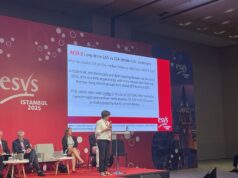
The final results showed that following on-label indications resulted in extremely low periprocedural stroke and death rate (2.6%) with Wingspan for FDA approved indication. This was better than the FDA’s target of 4%. The trial data suggest that patients suffering from intracranial atherosclerotic disease may benefit from endovascular treatment with the Wingspan Stent System
Off-label use, particularly within seven days of stroke, appeared to significantly increase the risk of periprocedural stroke and death, increasing it to 23.9%.
The Wingspan stEnt system post mArket surVEillance (WEAVE) trial was an FDA mandated postmarket surveillance study funded by Stryker. It was the largest on-label enrolment of any stent trial for intracranial atherosclerotic disease (ICAD) in the U.S. to date (n=152) and has the lowest reported periprocedural complication rate. The FDA also wanted to look at the outcomes of those patients who were treated off-label at the same institutions that the trial was being carried out at. A total of 24 hospitals across the U.S. enrolled patients into the trial.
The on-label use criteria were; 70-99% stenosis intra-cranial atherosclerotic lesion more than seven days post stroke, 22 to 80 years old, modified Rankin Score (mRS) of three or less, difficult to manage medically and recurrent (two or more) strokes. The final criteria made it very difficult to enrol patients in the trial, as patients who have had two or more strokes were less likely to have a functional mRS score.
The trial originally planned to enrol 389 on-label patients with the goal of achieving a periprocedural stroke and death rate of less than 6.6%. The study was designed to have experienced interventionalists performing the procedure. Interventionalists performing stenting procedures in the trial had a mean case experience of 37 Wingspan cases prior to enrolling their first patients.
The primary endpoint was stroke or death within 72 hours of the procedure in on-label treated patients with a secondary analysis to include the evaluation of outcomes in off-label patients. Enrolment was carried out across 24 sites in the USA and 152 patients were enrolled in the on-label arm and 46 were enrolled in the off-label arm.
An interim analysis was carried out after 100 patients were enrolled using Bayesian analysis. The analysis showed that, as the complication rate was already low, completion of the study could take place once 150 on-label patients were enrolled and the primary endpoint of periprocedural stroke and death was 4% or lower. The trial began enrolling in December 2013 and stopped early on October 25 2017, with a periprocedural stroke or death rate with 72 hours of 2.6% in the on-label group, lower than the 4% needed. In the off-label branch, the stroke or death rate after 72 hours was 23.9% (p=0.0001) this was statistically different to the on-label group. The most common reason for patients being treated off-label was that they were treated early, within seven days of stroke.
“There’s speculation that patients treated within seven days have a higher complication rate as the plaques might be ‘hot’, having a higher thrombotic risk in placing a foreign body in the vessel,” speculated Michael Alexander, principal investigator (Cedars-Sinai Medical Center, Los Angeles, USA). He continued, “There could also be capillary instability so that re-perfusing a vessel that has 99% stenosis has a higher risk for reperfusion haemorrhage.”
The trial results suggest re-evaluation of stenting as a treatment option for symptomatic patients with intracranial atherosclerotic disease is needed, given the better safety profile than earlier reports and that patients suffering from intracranial atherosclerotic disease may benefit from endovascular treatment with the Wingspan Stent System.
Alexander concluded, “The WEAVE trial final data demonstrate quite impressive safety results for intracranial stenting with proper patient selection and experienced NeuroInterventionalists. This trial lends support for re-considering stenting as a viable treatment option for patients with symptomatic intracranial atherosclerotic disease.”










